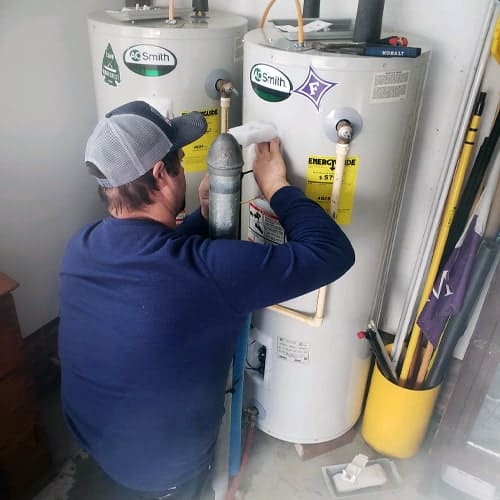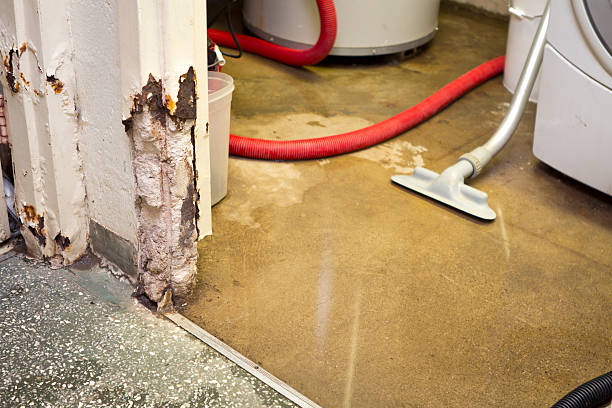Have you been in search of advise around How to Avoid a Broken Hot Water Heater?

Whether it is located in the cellar or a separate space, busted water heating units can cause stress and anxiety. Having no hot water supply is additionally bothersome.
Call the Plumber
After doing the initial 2 safety steps, you should call your plumber to find right now to fix a burst hot water heater. Nevertheless, keep in mind that your unit will not just collapse significantly overnight. There are typically indications that your aging water heater has sediment buildup in the inside. Remember of the following:
Do not wait on significant flooding to call the plumber. Already, you will certainly need to spend even more to recover your home. Instead, as soon as you identify these signs, have actually an expert concerned check your water heater container. Usually, water heaters have a life expectancy of concerning 8 to 12 years. With regular examination as well as maintenance, you can extend its life.
Cut Off the Cold Water Supply
Cut off the storage tanks touch water supply from the resource. When your tank is in good problem, the cool water stops loading up when the container is complete. If you can not locate it or reach it, you have to turn off that main water supply line outside your home.
Shut Down Source Of Power
Prior to calling the plumber, shut off a gas hot water heater by turning the temperature level dial. This is usually located at the top of the thermostat. Switch over off the circuit breaker if you have a model that runs on electrical power. This will certainly prevent electrocution, specifically if there is a leakage as water is a conductor. Commonly, the burner shuts off when the water hits a specific temperature level. Yet with a damaged tank, it may malfunction. Cutting it off guarantees you stay secure.
Clean Up Residential or commercial property
After calling the plumber, file damages by remembering and photos so you can claim your home owner's insurance. From there, begin the immediate clean-up. Secure any type of vital items to stop further saturating. Eliminate any standing water to avoid mold and mildew and mold growth. If you have a submersible water pump, use that to drain the water. Otherwise, the traditional bucket method will certainly likewise work. Try to wipe out every little thing, consisting of walls and walls. If you have an electric fan and also dehumidifier, keep them going to maintain air circulating. This will certainly aid deter mold development.
Keep in mind, if you observe any type of concerns with your water heating unit, call the pros right away. You can not take this issue gently since a defective thermostat can raise water temp to a precariously high degree, leading to accidental burns.
After doing the initial two safety actions, you have to call your plumber to come right away to take care of a burst water heating unit. Instead, as soon as you spot these indicators, have an expert come to examine your water heater container. Prior to calling the plumber, shut off a gas water heater by transforming the temperature level dial. If you have a submersible water pump, utilize that to drain pipes the water. Keep in mind, if you notice any kind of issues with your water heating unit, call the pros right away.
8 REASONS YOUR HOT WATER HEATER IS NOT WORKING & HOW TO FIX
Water Heater Problems & Solutions
Loose or Damaged In-Line Valve
Unlike a water leak near the bottom of your water tank, a water leak on top of your system can be easily fixed. A common cause of water tank leaks includes a loose in-line valve. This is a handle that is located at the top of the water tank that is engineered to activate or deactivate the flow of water. To fix this problem, you will need to secure the nut that holds the ball or in-line valve in its location. If the leak becomes more severe once it is tightened, you will be required to travel to your local hardware store to purchase a new in-line valve for your water heater.
Damaged Pressure Relief Valve
Most types of water heaters are equipped with a pressure relief valve that is engineered to discharge pressure from the water tank when it becomes too high. If this valve on top of your water heater begins to leak, we recommend purchasing a new one online or from your local store. The process of removing and replacing pressure relief valves is not complicated.
No Warm Water
If you have an electric water heater in your home, the most typical cause of a lack of warm water is a broken heating element. Your water heater is equipped with two heating elements that are tasked with heating incoming water in the water tank. Once a heating element begins to malfunction, you will have little to no hot water to use for showering, cleaning, and laundry.
Low Supply of Hot Water
Are you continuously running out of warm water? This issue may be a byproduct of a cracked dip tube. This tube is engineered to push cold water to the base of your water tank to be heated. Once a crack or hole begins to form in the dip tube, the incoming supply of cold water may be released near the top or middle of your tank. As a result, the cold water on top of the tank will be sent to the faucets and showers in your house. This hot water heater problem can only be fixed by replacing the dip tube on your system. Since the process of installing a new dip tube is complex, we recommend calling a certified technician for help.
A low supply of warm water may also be a signal of excess sediment buildup in your water tank. As your water heater reaches the middle of its life cycle, minerals in water including magnesium and calcium will begin to collect at the base of the water tank. As the minerals continue to grow, there will be less room in the water tank to store hot water. To resolve this problem, flush your water heater to remove the excess minerals.
Water is Too Warm or Cold
If the water in your shower feels uncomfortable hot or cold, you can adjust the temperature of your water by changing the settings on your thermostat. Setting the temperature to 120 degrees Fahrenheit may help you save money on your utility bills. This is an excellent temperature to use if you’re worried about scalding or skin irritation. Does this temperature feel too cold? You may also adjust the thermostat to 140 degrees Fahrenheit to make your showers more pleasant. If your hot water heater is not working when you change the temperature, this is an indicator of a broken thermostat. Immediately find a certified plumbing or heating contractor in your area to repair or replace your thermostat.
Low Water Pressure
Low water pressure is not always caused by a malfunctioning water heater. If you live in an older home with smaller water pipes, the flow of water will be restricted prior to reaching our kitchen or bathroom skins. The only way to eliminate this hot water heater problem is to connect new ¾-inch water lines to your system. Another type of problem that may negatively impact your water pressure includes calcium deposits in water pipes.
As magnesium and calcium begin to form in your pipes, the diameter of your water lines will become smaller. As a result, the warm water from your water heater will not be able to travel in an efficient manner to your sinks or appliances. Since the process of replacing water pipes includes removing drywall, an average homeowner that does not have a plumbing license will not be able to fix this hot water heater problem.
https://www.wmhendersoninc.com/blog/8-reasons-your-water-heater-is-not-working-how-to-fix/

As a keen reader on How to Avoid a Broken Hot Water Heater, I imagined sharing that article post was a good thing. Those who liked our blog post kindly make sure you remember to share it. I value reading our article about Maintaining & Draining a Water Heater.
Get Your Estimate Now